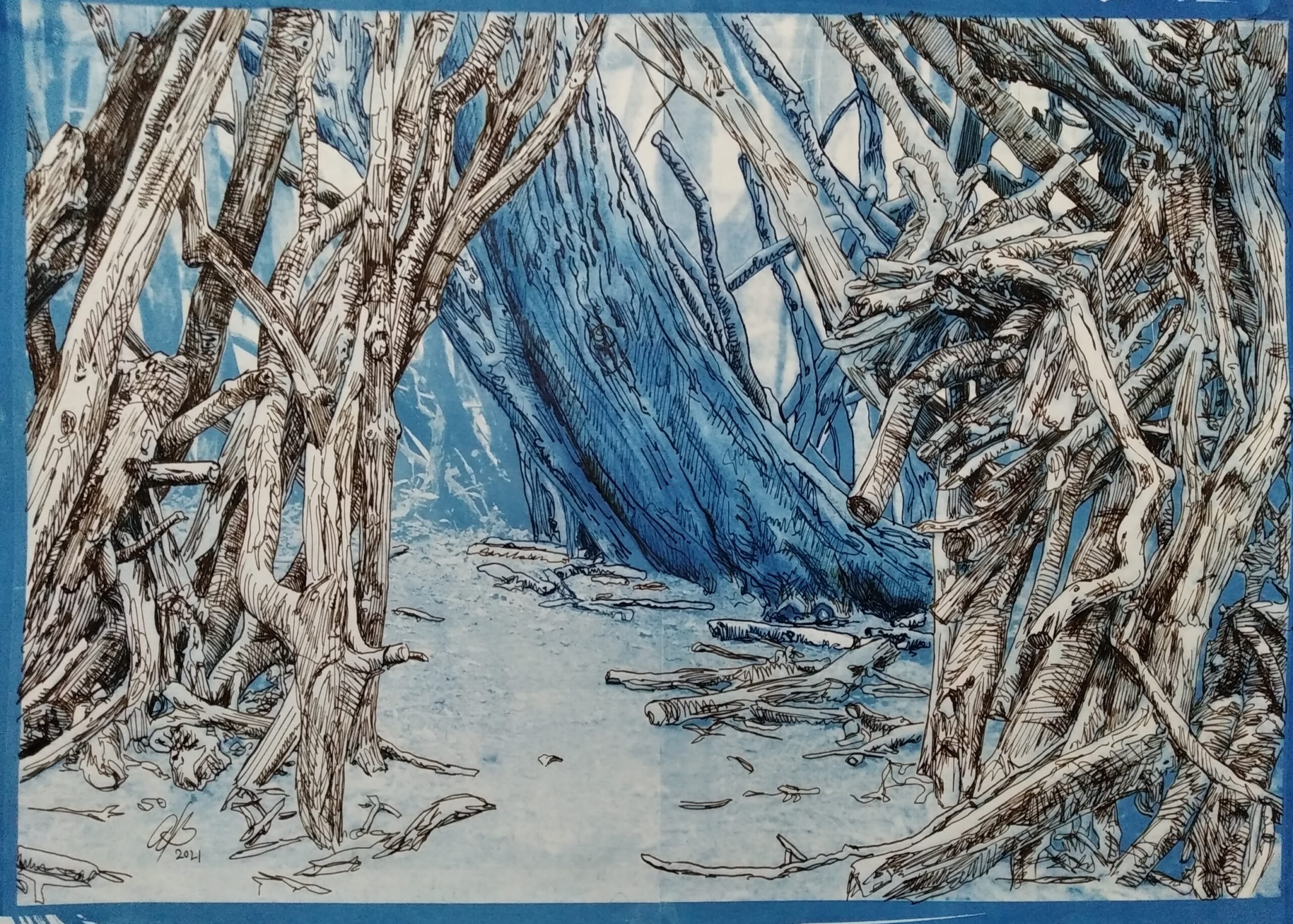Cyanotype is an “alternative” photographic process. It’s been around since 1842 (see here for the history) and was widely used to reproduce technical drawings. It is the origin of the term “blueprint”, and was one of the aspects that originally drew me to the process. The method is simple and there are no nasty chemicals (although you do run the risk of staining things a vivid blue). The materials aren’t very expensive and the actual prints are developed for free by the sun (they are sometimes called “sunprints”.
In this instance, I was working with images from my digital camera. The first step is to create a digital negative and print it on to a transparent film; I used inkjet transparencies intended for use with an overhead projector. You coat your paper (I used heavyweight drawing paper) with the photosensitive chemicals, let it dry in a dark space and then expose it to the sun.

It occured to me to draw on the prints. Well, it was drawing paper. In all of the following, I used a walnut brown ink that I thought would work well with the Prussian Blue.
For the one at the top of this post, I used Walnut Brown and Prussian Blue inks, both (I think) “hues” (that is, approximations to the named colours). Cyanotype itself is real Prussian Blue.






